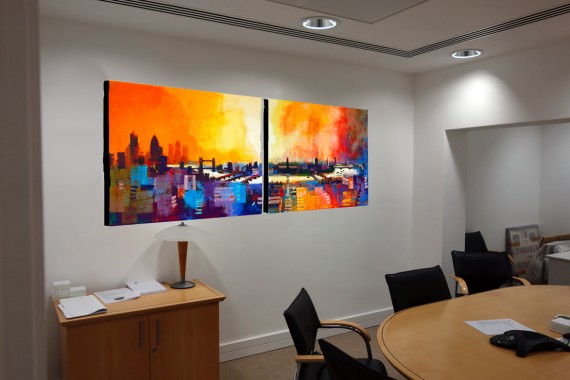RENTING A PICTURE
Ownership, why?
Renting a picture instead of ownership is the question and subject of this blog post. In fact anybody who buys art could also be a customer to rent art. But why would anybody choose to rent rather than buy?
Obviously the initial cost might be a factor. The current rate to rent seems to be about 5% to 10% of the purchase price per month. So an admirer might be able to rent a much more valuable artwork than they could afford to buy straight out.
Plus I think that some renters have another reason. In the UK they might have a tax advantage because rent is totally tax deductible, whereas purchase might not be. I understand that this depends on the tax jurisdiction of course.
A further consideration might be that some potential purchasers are not sure whether the picture will work as much for them in a few months time.
It might be because they are in an ever-changing environment with different viewers like an office or reception area. By renting they can always change the art and get fresh stimulus.
So they opt to get a change of artwork whenever the contract allows. Probably every six months or so if agreed with the supplier.

London Panorama by Colin Ruffell boardroom visual
Yes, you might have noticed that the art rental market is mostly focused onto the business user. Offices and interior designers are the typical usual customers.
But of course this way they do not own the artwork. There is nothing to hand on down to the kids. There is no long-term investment potential. The rent bills will keep coming in.
So is there another way that achieves the best of both worlds? Well yes there is. Some rental agreements will say that a percentage of the rents paid at any one time can be converted to purchase the rented artwork. So a customer who rents, then wants to buy after a while, can purchase the artwork for a whopping discount.
The renter gets a steady rental income for a while and then a sale. The total will be a bit more than if they had just sold in the beginning, while the renter/buyer has a trial period to be sure that they want to own and a longer time scale to pay for the art.
So it looks as though anyone in the art-business should offer their product for sale or rent to satisfy a wider range of potential clients.
However, there are other considerations that complicate the matter. Firstly there is an administration burden. Keeping track of who has what, how much they have paid, how much they owe, etcetera could overwhelm many small operators.
Secondly, the actual workload of framing, installing and collecting back could take time. A business customer such as an office suite might expect to swap their rented art regularly and this could be very inconvenient for an artist or small local art gallery.
Thirdly the customer might want to see a much wider variety of product than a single artist or small gallery can offer.
So art rental seems to be a business-to-business area, and not an artist to collector area.
But I also reckon that the rental market has been avoided by many in the art business because it has a lower status than straight sales. It is seen to be so commercial and many artists are ashamed of any hint of commercialism in their practice.
A couple of my current outlets are art-business people who rent out my paintings and prints to offices. Mostly offices, but also hotels, restaurants, doctors waiting rooms and even private customers with bed and breakfast setups. Over the fifty plus years that I have been a full-time professional artist I have supplied a few art-businesses that rent out my work. They have come and gone. Some thrived then folded, others just faded away. It didn’t hurt me too much.




